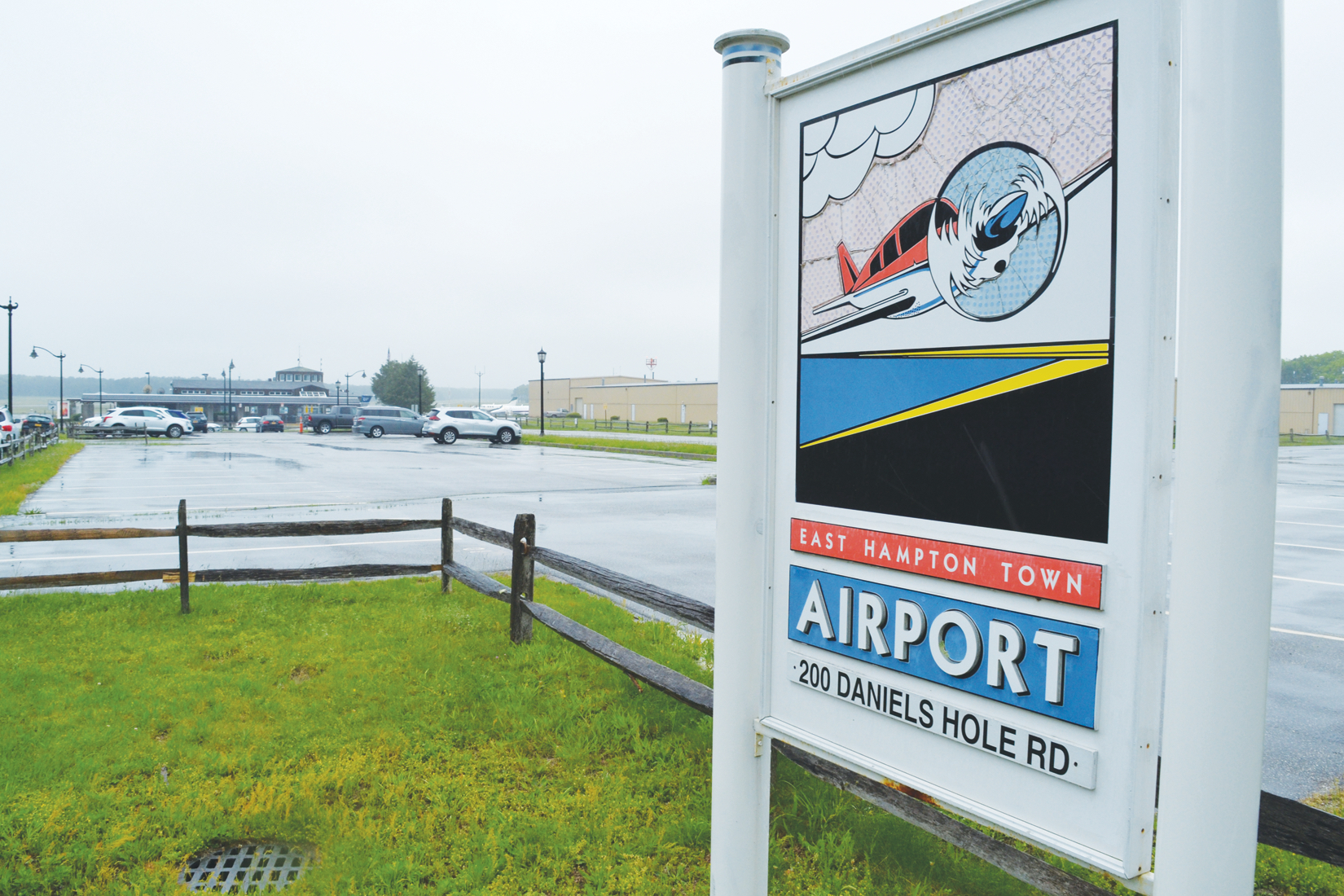Thoughts on Closing the East Hampton Airport

This past May, East Hampton Airport began ordering incoming aircraft to approach the airport on a flight path directly over the wealthy mansions of the summer people on the Atlantic Ocean. It lasted a month. I often visit friends and family at these estates. Planes were flying overheard at 5-minute intervals. Conversation stopped. Then it started again. Seemed fair. The rich have the planes. About time they get the noise. After Memorial Day the route was changed.
I mention this because the Town of East Hampton, which owns the airport, is currently holding public hearings that will lead to a decision about whether to close the airport permanently or not. The issue is noise. If East Hampton decides to close it, they could restore it to a woods or a park or something else.
Public officials say that the Federal Aviation Administration’s grant restrictions which prevent such a closing will no longer be in effect as of Sept. 25, 2021. They point to an email they got from an FAA official which says, “…while the FAA encourages the preservation of airports, we recognize this is a local decision.” But it’s an email, not a ruling.
I don’t know all the answers, but over the years I’ve paid attention. It seems to me that if we vote to close it and then do it, it could be a terrible mistake. I’ve heard that, according to a land transfer deed made in 1945, the feds will simply come in, enforce the agreement, take back ownership of the land (it used to be theirs), and declare the airport a crucial part of the national transportation system, reopening it under federal control. Then we will have no say whatsoever about its future.
Jay Schneiderman, the Southampton Town supervisor and a former East Hampton Town supervisor remembered hearing about this.
“It was a rumor,” he told me. “I’m not sure it was true.”
One of our current town councilmen told me he’d heard this rumor, too.
I looked into this. It is true. The airport was constructed around 1936 as a Works Project Administration (WPA) project under the Roosevelt administration on federal land. The airport thrived. During World War II (1941–1945) it was used to transport fighter planes and war materials to Europe. After the war ended, the feds declared the airport war surplus, deeded the property to the town for $1, and added the restriction that if it ceased being an airport, the feds would have the right to reverse the deed and take back the property.
You think they wouldn’t do that? Talking to town councilmen about this, I was told this is only done if this were a stage 3 airport, with commercial scheduled flights. It’s never been done with a stage 2 airport such as East Hampton which has chartered aircraft, helicopters and private planes.
They got this assurance from their own lawyers, though, people they’ve paid to help them close the airport if that’s what we want to do.
In April 2015, East Hampton put flight restrictions into effect without official FAA approval. Planes arriving after 11 p.m. got tickets. Planes with high noise levels got tickets. Airport officials said because they hadn’t received financial aid from the FAA since 2001, they could do this. But they were wrong. Though the FAA was sometimes friendly to our plight, a lawsuit was launched by the aircraft industry to declare our restrictions illegal. The restrictions violated federal laws, they said. And they won. These modest restrictions were then tossed. This was a shameful thing. Today, you can land an unbearably noisy plane or chopper at East Hampton anytime you want.
Now the town again says that since they stopped taking FAA money to run and maintain the airport in 2001, the grant assurances which prevent our closing the airport will no longer be enforced after Sept. 25, 2021. Turns out there are at least 29 grant assurances in the official Federal Airport Noise and Capacity Act of 1990, but not all expire. For example, a court document from the 2014 case states grants #19 and #22 expire on September 25, 2021, but grant #23 “never expires.”
What is assurance 23? It says the town may not “impose anti-competitive restrictions on airport use.” Roughly translated it means you have to accept noisy as well as quiet aircraft forever and ever.
And what if there is no airport? I call this encouragement to close the airport to be a wolf-in-sheep’s-clothing scenario. Town closes the airport, the feds pounce.
This goes all the way up the U.S. Department of Transportation ladder. Know who heads that up today? Biden appointed Pete Buttigieg, former mayor of South Bend, Ind. We should be talking to him.
I called the airport in Naples, Fla., the other day. They have been trying to put in aircraft restrictions for more than 10 years. None have been approved.
I have a friend who lives on a giant yacht in Naples Harbor on the glide path into Naples.
“Is there any progress about closing the airport?” I asked.
“The billionaires will never allow Naples to close its airport,” came the reply.
Here is another pertinent statement:
“The FAA uses a metric, an annual average decibel level of 65. That doesn’t work for your airport. No aircraft noise reaches 65 decibels in the areas where noise complaints are concentrated. As the FAA sees it, there is no noise problem at East Hampton Airport.”
— Bill O’Connor, the outside council to the town legal team.



